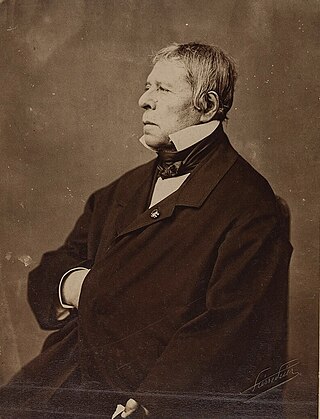
Jean-Auguste-Dominique Ingres was a French Neoclassical painter. Ingres was profoundly influenced by past artistic traditions and aspired to become the guardian of academic orthodoxy against the ascendant Romantic style. Although he considered himself a painter of history in the tradition of Nicolas Poussin and Jacques-Louis David, it is his portraits, both painted and drawn, that are recognized as his greatest legacy. His expressive distortions of form and space made him an important precursor of modern art, influencing Picasso, Matisse and other modernists.
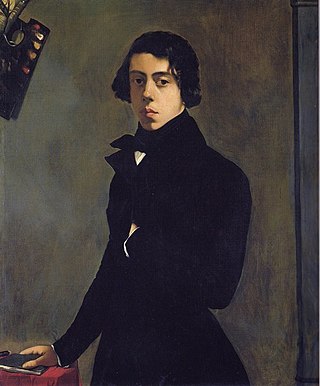
Théodore Chassériau was a Dominican-born French Romantic painter noted for his portraits, historical and religious paintings, allegorical murals, and Orientalist images inspired by his travels to Algeria. Early in his career he painted in a Neoclassical style close to that of his teacher Jean-Auguste-Dominique Ingres, but in his later works he was strongly influenced by the Romantic style of Eugène Delacroix. He was a prolific draftsman, and made a suite of prints to illustrate Shakespeare's Othello. The portrait he painted at the age of 15 of Prosper Marilhat makes Chassériau the youngest painter exhibited at the Louvre museum.

Pierre Mignard or Pierre Mignard I, called "Mignard le Romain" to distinguish him from his brother Nicolas Mignard, was a French painter known for his religious and mythological scenes and portraits. He was a near-contemporary of the Premier Peintre du Roi Charles Le Brun with whom he engaged in a bitter, life-long rivalry.

Anne-François-Louis Janmot was a French painter and poet.
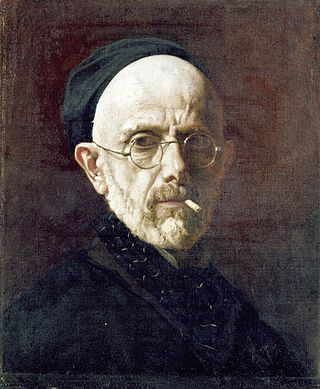
Henri Lehmann was a German-born French historical painter and portraitist.

Marie Bracquemond was a French Impressionist artist. She was one of four notable women in the Impressionist movement, along with Mary Cassatt (1844-1926), Berthe Morisot (1841-1895), and Eva Gonzalès (1847-1883). Bracquemond studied drawing as a child and began showing her work at the Paris Salon when she was still an adolescent. She never underwent formal art training, but she received limited instruction from Jean-Auguste-Dominique Ingres (1780–1867) and advice from Paul Gauguin (1848–1903) which contributed to her stylistic approach.
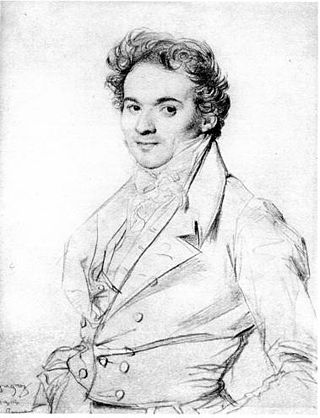
Jean Alaux, called "le Romain", was a French history painter and Director of the French Academy in Rome from 1846 to 1852.

Louis Pierre Henriquel-Dupont was a French engraver. His students included Charles Bellay, Jean-Baptiste Danguin, Adrien Didier, Alphonse and Jules François, Adolphe-Joseph Huot, Achille and Jules Jaquet, Jules Gabriel Levasseur, Aristide Louis, Louis Marckl, Isidore-Joseph Rousseaux, Abel Mignon and Charles Albert Waltner.

Victor-Louis Mottez was a French fresco painter, painter and portraitist.

Portrait of Monsieur Bertin is an 1832 oil on canvas painting by Jean-Auguste-Dominique Ingres. It depicts Louis-François Bertin (1766–1841), the French writer, art collector and director of the pro-royalist Journal des débats. Ingres completed the portrait during his first period of success; having achieved acclaim as a history painter, he accepted portrait commissions with reluctance, regarding them as a distraction from more important work. Bertin was a friend and a politically active member of the French upper-middle class. Ingres presents him as a personification of the commercially minded leaders of the liberal reign of Louis Philippe I. He is physically imposing and self-assured, but his real-life personality shines through – warm, wry and engaging to those who had earned his trust.
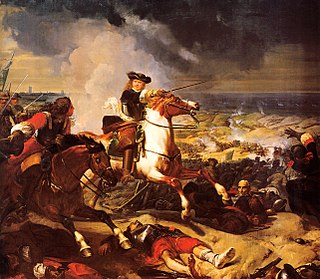
Charles-Philippe Larivière was a French academic painter and lithographer.
Hélène-Louise Demars (1736–1778) was a French composer and music teacher.

Hygin-Edmond-Ludovic-Auguste Cavé (8 October 1796 – 30 March 1852) was a French attorney, journalist, and government official, as well as an occasional playwright and librettist, who often collaborated with Adolphe Dittmer under the pseudonym Jacques François de Fongeray. He is also sometimes referred to as Edmond Cavé. He is perhaps best known as the subject of a portrait by the French artist Ingres, which is on display at New York's Metropolitan Museum of Art.

The Sickness of Antiochus or Stratonice and Antiochus is an 1840 painting by the French artist Jean-Auguste-Dominique Ingres. It is now in the Musée Condé in Chantilly.

Raphael and La Fornarina is an oil painting on canvas executed in 1813, in Italy, by Jean-Auguste-Dominique Ingres. It is the first of five versions of the painting he produced between 1813 and his death in 1867. In 1814 his first version was exhibited at the Salon. The work shows the renowned painter, Raphael, sitting in his studio with his mistress, La Fornarina, on his knee. His embrace reflects his affection and desire for her, while his gaze towards his own artwork, his portrait of his mistress, indicates his love for art. This contrast represents the painter's major conflict between who he loves and what he loves. The mistress makes eye contact with the viewer and her posture, specifically her arms resting on his shoulders, shows how proud and satisfied she is with being his mistress and inspiration. The Fornarina's sensual gaze at the viewer claims her importance and place both within the artist's studio and profession.

Louise de Broglie, Countess d'Haussonville was a French essayist and biographer, and a member of the House of Broglie, a distinguished French family. A granddaughter of the novelist Germaine de Staël, she was considered independent, liberal, and outspoken. Her 1845 portrait by Jean-Auguste-Dominique Ingres, which took three years to complete, has been exhibited in the Frick Collection in New York City since the 1930s.

Henri Cueco was a French painter, essayist, novelist and radio personality. As a self-taught painter, his work was exhibited internationally. He was the author of several books, including collections of essays and novels. He was also a contributor to France Culture. A communist-turned-libertarian, he was a co-founder of Coopérative des Malassis, an anti-consumerist artists' collective. He was best known for The Red Men, a series of figurative paintings depicting aspects of the Cold War like the May 1968 events, the Vietnam War and Red Scare, and his 150 still lifes, or "portraits," of potatoes.
The style of architecture and design under King Louis Philippe I (1830–1848) was a more eclectic development of French neoclassicism, incorporating elements of neo-Gothic and other styles. It was the first French decorative style imposed not by royalty, but by the tastes of the growing French upper class. In painting, neoclassicism and romanticism contended to become the dominant style. In literature and music, France had a golden age, as the home of Frédéric Chopin, Franz Liszt, Victor Hugo, Honoré de Balzac, and other major poets and artists.

Self-Portrait Aged 24 is an oil on canvas self-portrait painting by Jean-Auguste-Dominique Ingres, executed in 1804. first exhibited at the Paris Salon of 1806. The painting is now held in the Musée Condé and is considered to be either the 1804 portrait with modifications by the artist from 1851 or an autograph copy by Ingres of a lost work. It is his earliest self-portrait, and he extensively reworked it between 1804 and 1851.
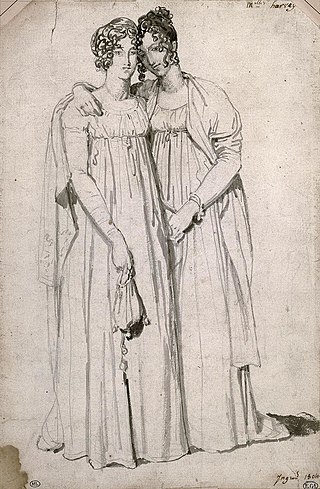
Elizabeth or Elisabeth Harvey was an English artist known for Malvina Lamenting the Death of Oscar and for portraits of Jacques-Henri Bernardine de Saint-Pierre and his family.




















